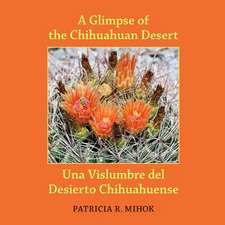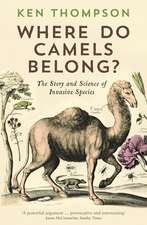Understanding Biodiversity
Autor David Zeigleren Limba Engleză Hardback – 29 mai 2007 – vârsta până la 17 ani
Preț: 364.06 lei
Preț vechi: 501.84 lei
-27% Nou
Puncte Express: 546
Preț estimativ în valută:
69.66€ • 75.91$ • 58.70£
69.66€ • 75.91$ • 58.70£
Carte tipărită la comandă
Livrare economică 23 aprilie-07 mai
Preluare comenzi: 021 569.72.76
Specificații
ISBN-13: 9780275994594
ISBN-10: 0275994597
Pagini: 192
Dimensiuni: 156 x 235 x 20 mm
Greutate: 0.46 kg
Editura: Bloomsbury Publishing
Colecția Praeger
Locul publicării:New York, United States
ISBN-10: 0275994597
Pagini: 192
Dimensiuni: 156 x 235 x 20 mm
Greutate: 0.46 kg
Editura: Bloomsbury Publishing
Colecția Praeger
Locul publicării:New York, United States
Notă biografică
David Zeigler is Associate Professor of Biology at the University of North Carolina at Pembroke. He teaches a variety of courses, on invertebrate zoology, zoology, entomology, parasitology, animal behavior, evolution, marine biology, neurobiology, and general biology.
Cuprins
Preface1. The Living Planet: The Unity and Diversity of Life2. Diversity, Complexity, and Natural Selection3. Species Diversity4. Diversity within Species5. Deep Biodiversity: Diversity "Above" the Species Level6. Genetic Diversity7. Diversity of Ecosystems and Ecological Interactions8. Four Billion Years of Temporal Diversity9. Morphological Diversity10. Metabolic Diversity11. Sensory Diversity12. Reproductive and Sexual Diversity13. Life Cycle Diversity14. Behavioral and Cultural Diversity15. Systematics: Elucidating and Representing Biodiversity16. Biodiversity and Values17. Comprehending BiodiversityGlossaryRecommended BooksIndex
Recenzii
Zeigler expands upon the usual notion of the concept of biodiversity as embracing diversity among species, genes, and ecological interactions. He argues for a broader definition and considers other parameters. After a review of the common characteristics of living organisms, he provides a synopsis of species diversity and the increasing complexity of living organisms, and then elaborates on diversity within species. He goes on to summarize genetic and ecosystem diversity, and then adds chapters on temporal, morphological, metabolic, sensory, reproductive, life cycle, behavioral, and systematic diversity.. His purpose in writing the book is to pique interest in earth's biodiversity in all its manifestations. Biology educators, especially those teaching non-majors, should consider asking students to read this book as an introduction to the life sciences. Recommended. Lower-/upper-level undergraduates and general readers.
It is certainly a book to set undergraduates thinking.
Writing for a general readership, Zeigler introduces the science of biodiversity. He describes a variety of types of biodiversity, including diversity within and between species, genetic diversity, diversity of ecosystems and ecological interactions, temporal diversity, metabolic diversity, reproductive and sexual diversity, and even behavioral and cultural diversity. He also discusses systematics as a means of representing biodiversity and considers what the implications of understanding biodiversity have to due with social and environmental values.
It is certainly a book to set undergraduates thinking.
Writing for a general readership, Zeigler introduces the science of biodiversity. He describes a variety of types of biodiversity, including diversity within and between species, genetic diversity, diversity of ecosystems and ecological interactions, temporal diversity, metabolic diversity, reproductive and sexual diversity, and even behavioral and cultural diversity. He also discusses systematics as a means of representing biodiversity and considers what the implications of understanding biodiversity have to due with social and environmental values.










